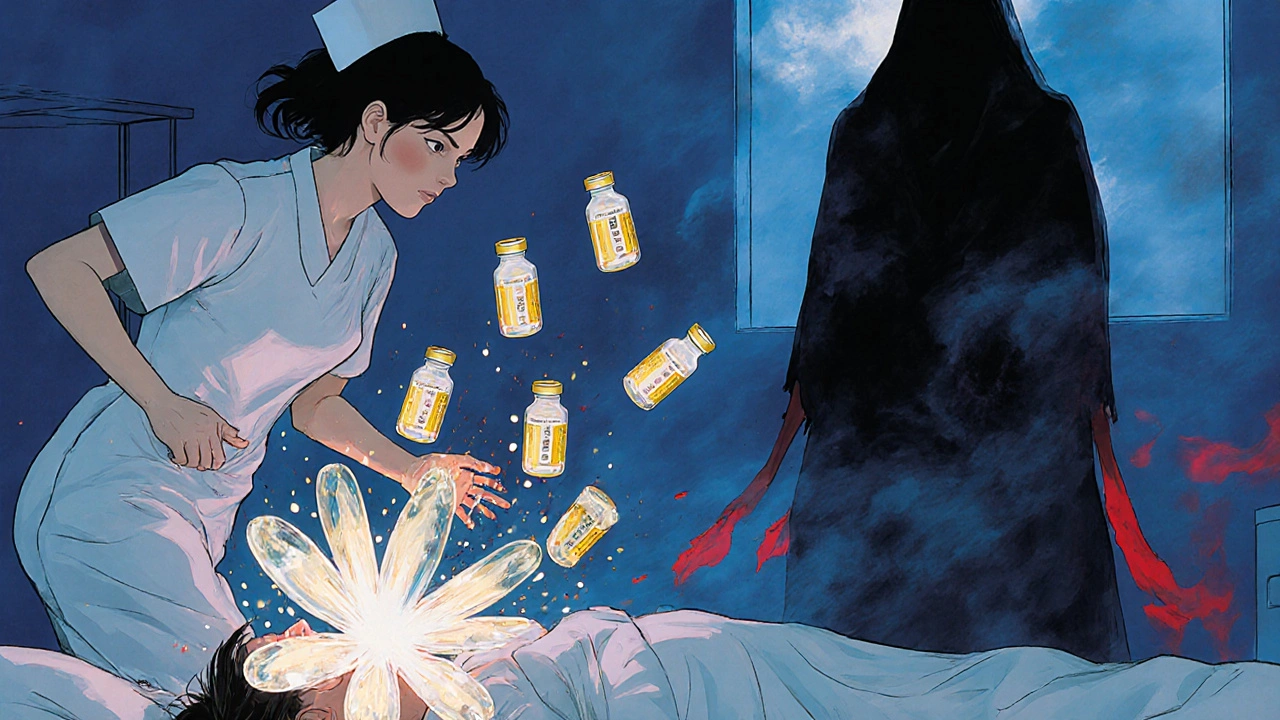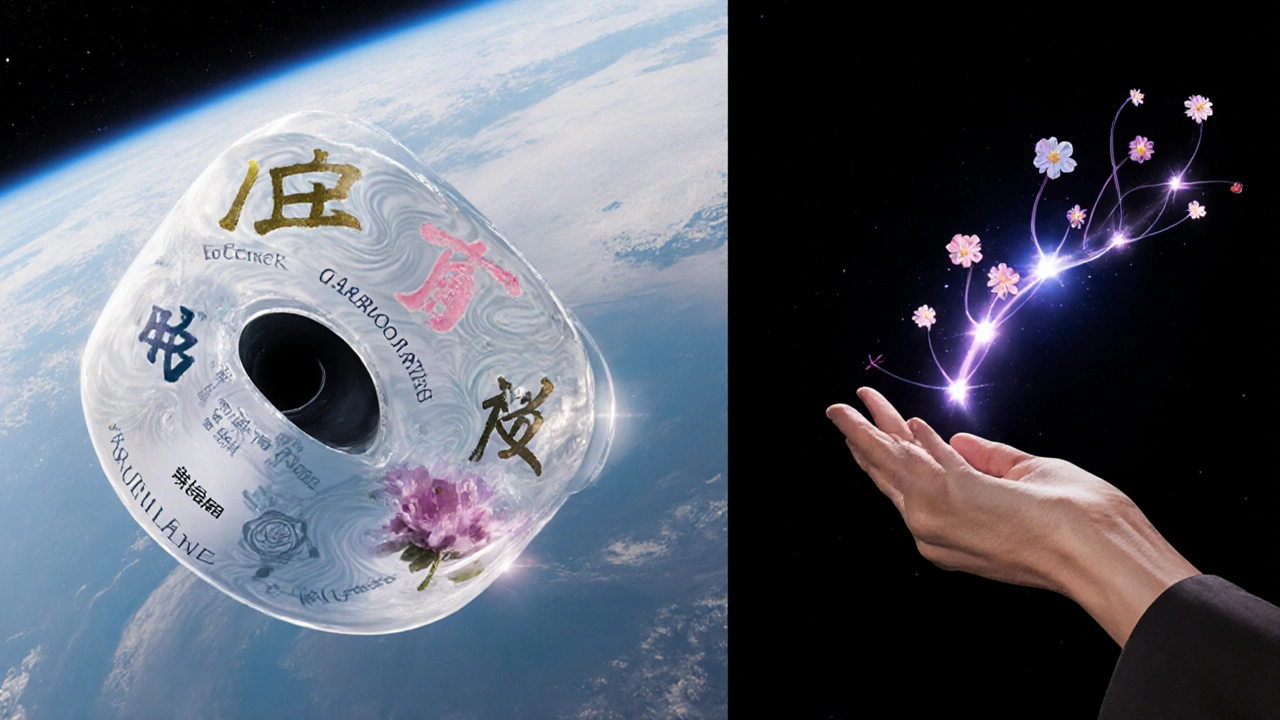What You Need to Know About Chemotherapy Allergic Reactions
Not every reaction during chemotherapy is just a side effect. Some are serious allergic responses that can turn deadly in minutes. If you or someone you care about is getting chemo, knowing the difference between a mild itch and anaphylaxis could save a life. About 5% of people on chemotherapy have some kind of allergic reaction, and for some, it gets worse with each treatment. The drugs that cause these reactions aren’t rare - taxanes like paclitaxel, platinum drugs like carboplatin, and monoclonal antibodies like rituximab are common culprits. What’s more, these reactions don’t always happen right away. They can build up over time, hitting hardest after the sixth or eighth infusion. The good news? These reactions are predictable, preventable, and treatable - if you know the signs and act fast.
Common Signs: It’s Not Just a Rash
People often think of allergic reactions as just a rash or hives. With chemo, it’s way more complex. Symptoms can show up in almost every system in your body. Look for:
- Skin: Flushing (58% of cases), intense itching (72%), hives (48%), swelling of lips or eyelids
- Respiratory: Wheezing, chest tightness, shortness of breath (45% in moderate cases), coughing
- Cardiovascular: Dizziness (27%), fainting (18%), rapid heartbeat (35%), low blood pressure (systolic under 90 mmHg in 22% of severe cases)
- GI: Nausea (35%), vomiting (28%), severe stomach cramps (42%), diarrhea
- Neurological: Anxiety (63%), feeling like something terrible is about to happen (48%), confusion, or even seizures (rare)
- Other: Metallic taste in mouth, vaginal itching, chills, fever, sweating
One of the most dangerous signs isn’t obvious: a sense of impending doom. Patients often describe it as "I know I’m going to die." That feeling, paired with breathing trouble or low blood pressure, is a red flag. Don’t wait. Don’t think it’s "just nerves." Call for help immediately.
When Do These Reactions Happen?
Timing matters. Most reactions happen during the infusion or within the first hour after. But some show up 12 to 48 hours later. That’s why patients are told to call their care team if they feel weird the next day.
With drugs like carboplatin, the risk isn’t random - it climbs with each cycle. Less than 1% of patients react on the first treatment. By cycle six, it jumps to 6.5%. After eight or more infusions, nearly 3 in 10 people will have a reaction. Oxaliplatin hits around 19% of patients, usually after six doses. Taxanes like paclitaxel often cause reactions after the second or third infusion. This isn’t bad luck - it’s immune memory. Your body learns to recognize the drug as a threat over time.
Some drugs, like L-asparaginase and rituximab, are notorious for reactions. Even contrast dye used in imaging can trigger similar responses. That’s why your oncology team asks about past reactions to contrast or other meds - it’s not just being thorough. It’s lifesaving.

How Doctors Tell It’s an Allergy - Not Just a Side Effect
Not every flush or chill is an allergy. Some reactions are caused by the drug irritating tissues, not your immune system. These are called infusion reactions. They can look the same, but they’re treated differently.
True hypersensitivity reactions involve your immune system releasing histamine and other chemicals from mast cells. That’s what causes hives, swelling, and low blood pressure. Doctors use a few tools to tell the difference:
- Clinical symptoms: If you have trouble breathing, low BP, or swelling in your throat - it’s likely anaphylaxis.
- Lab tests: Tryptase levels in the blood spike after an allergic reaction (over 11.4 ng/mL). Eosinophil counts may rise. Basophil activation tests (measuring CD63 or CD203c) can confirm drug-specific IgE.
- Timing and pattern: Reactions that get worse with each dose are almost always immune-mediated.
Doctors also rule out other causes - like septic shock or asthma flare-ups - which can mimic allergic reactions. That’s why detailed history matters. Did you have this before? With which drug? How quickly did it start? These details guide the next steps.
What to Do If a Reaction Happens
There’s no one-size-fits-all response. Treatment depends on how bad it is.
Mild Reaction (Grade 1)
Just a little flushing, mild itching, or a small rash. The infusion is paused. You get diphenhydramine (Benadryl) IV, maybe dexamethasone. After 15-30 minutes, if symptoms fade, the chemo may restart slowly.
Moderate Reaction (Grade 2)
Widespread hives, facial swelling, mild wheezing. Infusion stops. You get antihistamines and steroids. You’re monitored closely. Reinfusion only happens if symptoms fully resolve - and even then, at a much slower rate.
Severe Reaction (Grade 3-4)
This is an emergency. Symptoms: low blood pressure, wheezing, throat swelling, fainting, or cardiac arrest. Here’s what happens:
- Stop the infusion immediately.
- Give epinephrine - 0.3 to 0.5 mg injected into the thigh (1:1,000 solution). Repeat every 5-15 minutes if needed.
- Put you on oxygen (4-6 liters per minute).
- Position you flat on your back with legs raised to improve blood flow.
- Start IV fluids to support blood pressure.
- Call for emergency help. Airway support may be needed if swelling blocks breathing.
Angioedema - deep swelling under the skin, especially in the throat - is a silent killer. It doesn’t always cause pain. But if your voice changes or you can’t swallow, it’s already too late to wait. Epinephrine is the only thing that works fast enough.
How to Prevent These Reactions
Prevention starts before the first drip. For high-risk drugs like paclitaxel or docetaxel, premedication is standard:
- Dexamethasone: 20 mg IV, given 12 and 6 hours before infusion
- Diphenhydramine: 50 mg IV, 30 minutes before
- Famotidine: 20 mg IV, 30 minutes before
This combo cuts reaction rates by more than half. Slower infusion rates also help - especially after a prior mild reaction. Some centers start at 10% of the planned rate and increase over 30-60 minutes.
If you’ve had a severe reaction, the drug is usually avoided forever. But if it’s the only effective option - like with certain ovarian or lung cancers - desensitization may be an option. This means giving tiny, increasing doses of the drug over 4 to 12 hours under close watch. It’s not risk-free, but it lets people keep using life-saving drugs.

What Patients Must Do
You are the first line of defense. Nurses can’t monitor you 24/7. You need to speak up.
- Tell your team about every past reaction - even if it was "just a little rash."
- If you feel anything unusual - tingling, warmth, tight chest, dizziness - say it. Don’t wait. Don’t think it’s "nothing."
- Know your drugs. Ask: "Which of these can cause allergic reactions?"
- Wear a medical alert bracelet if you’ve had a severe reaction.
- Keep a written list of drugs you reacted to - and bring it to every appointment.
Many patients stay quiet because they don’t want to be seen as "difficult." But in chemo, being loud about symptoms is the smartest thing you can do.
What Every Clinic Must Have
Hospitals and infusion centers are required to have emergency anaphylaxis kits ready at all times. These kits must include:
- Epinephrine auto-injectors or vials (1:1,000 solution)
- IV antihistamines and corticosteroids
- Oxygen delivery system
- IV fluids and tubing
- Basic airway tools (bag-valve mask, suction)
Staff must be trained to recognize and respond within minutes. Waiting for a doctor to arrive isn’t an option. Epinephrine works in seconds. Delaying it by even 5 minutes can be fatal.
Can you have a chemo allergy on the first treatment?
Yes, but it’s rare. Most reactions happen after multiple doses because your immune system needs time to recognize the drug as a threat. However, some people have immediate reactions on the first infusion - especially with monoclonal antibodies like rituximab or cetuximab. If you’ve had allergic reactions to other drugs or contrast dye, your risk is higher.
Is a chemo allergy the same as a food allergy?
The symptoms can be similar - hives, swelling, trouble breathing - but the triggers are different. Food allergies involve IgE antibodies reacting to proteins. Chemo allergies often involve IgE too, but sometimes they’re caused by other immune pathways. That’s why allergy tests for food don’t predict chemo reactions. Testing for chemo allergies requires specialized blood or skin tests, not standard food panels.
Do all chemo drugs cause allergic reactions?
No. Some drugs like cyclophosphamide or methotrexate rarely cause true allergies. But certain classes are high-risk: taxanes (paclitaxel, docetaxel), platinum drugs (carboplatin, oxaliplatin), and monoclonal antibodies (rituximab, trastuzumab). L-asparaginase and procarbazine are also known triggers. Your oncologist will warn you if your drug is on that list.
Can you get desensitized to a chemo drug you’re allergic to?
Yes, if the drug is essential and no good alternatives exist. Desensitization involves giving tiny, increasing doses over 4 to 12 hours under constant monitoring. It temporarily resets your immune response so you can complete treatment. It’s not a cure - the allergy returns if you stop the drug for weeks. But it’s been used successfully for decades in patients with ovarian cancer, lymphoma, and others who need carboplatin or paclitaxel.
What should I do if I have a reaction at home?
If you’re having a reaction after leaving the clinic - especially trouble breathing, swelling, dizziness, or chest pain - call 911 immediately. Don’t wait. Don’t try to drive yourself. Epinephrine is the only treatment that works fast enough, and it’s not available over the counter for chemo allergies. If you’ve had a severe reaction before, ask your doctor about carrying an epinephrine auto-injector, though this is not standard practice for all patients.
Final Takeaway
Chemotherapy hypersensitivity isn’t something you can ignore. It’s not a side effect you just "live with." It’s a medical emergency that demands recognition, speed, and preparation. Whether you’re a patient, caregiver, or provider - knowing the signs, acting fast, and speaking up can mean the difference between survival and tragedy. Every infusion should be treated with respect. Not because chemo is dangerous - but because your body’s response to it can be.

